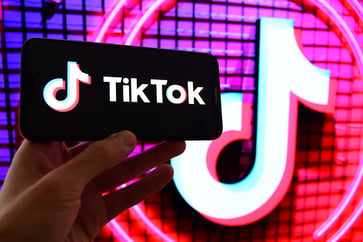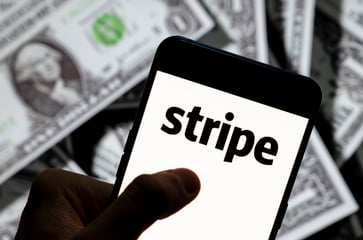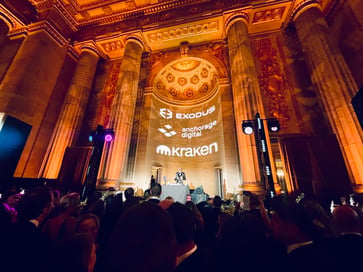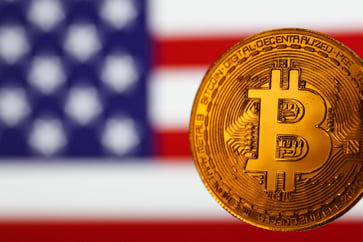Financing solar power for residential real estate: A guide for homeowners

- Homeowners are increasingly considering residential solar energy systems as attractive improvement projects due to the Inflation Reduction Act and various incentives from local, state, lenders, and utilities.
- The decline in the cost of solar panels and battery storage of energy is also occurring.
- The payback equation for renewable energy is complicated due to politically charged issues like net metering and higher interest rates on home energy loans.
In order to reduce energy costs and take advantage of growing renewable energy incentives and tax breaks, many homeowners are considering installing a solar system in their homes. Despite a decrease in overall solar installation growth across all sectors, including commercial and utility-scale projects, residential solar projects experienced a "staggering" 40% growth in 2022, with over 700,000 U.S. homeowners installing solar systems.
The solar market is facing a range of complex issues, including political disputes. Debates persist over the sourcing of solar energy components and tariffs on imports from China. President Biden recently vetoed a bill that would have reinstated tariffs, which could have increased costs throughout the solar supply chain. Net metering, a key way homeowners can be compensated for generating their own energy, suffered a significant blow in California last year, which is expected to lower the growth of residential projects this year. Additionally, tighter lending conditions in the credit market, resulting from Federal Reserve interest rate hikes, are driving up loan rates for solar projects.

Solar panel installations can be costly, but financing options are available to most homeowners. The national average for a 10 kilowatt solar panel installation in 2023 is around $20,000 after a 30% federal solar tax credit, according to EnergySage. Loans have become a popular way to finance solar projects, and even as low and zero-interest rate offers disappear, higher retail utility bills continue to make lending rates reasonable. In 2022, the loan segment accounted for roughly 70% of residential solar projects, and while this may not repeat in 2023, it will remain a significant part of the solar market.
Before making a financial decision regarding solar power for their homes, homeowners should start with the basics and consider key factors.
Do your research on state-by-state solar costs
It's easy to determine what you might want to purchase and its cost before investigating payment options, according to Joel Rosenberg, a member of the special projects team at Rewiring America, a nonprofit dedicated to electrifying homes, businesses, and communities.
To get a more accurate idea of solar quotes, homeowners should use EnergySage, which takes into account real-life factors such as the size of the system. This is crucial to consider before deciding on how to finance the installation, according to him.
Seek out local energy financing programs
Solar financing programs can be found at the state's energy office and local electric utility when homeowners are ready to explore financing options for digging deeper into solar energy.
Madeline Fleisher, an Ohio-based environmental and energy lawyer who runs a clean-energy website, stated that although they may not be directly involved, they can often flag things that may be worth looking into.
Certain lenders in Ohio offer a reduced rate on solar loans through the state program.
Get solar loan quotes from multiple lenders
It is advised by EnergySage CEO Vikram Aggarwal that consumers should obtain quotes from at least three to five sources while being cautious about the terms and conditions.
Lenders who can provide loans to potential homeowners include local banks, credit unions, national banks, and specialized green banks that focus on environmentally friendly projects.
Fleisher stated that green banks may offer more robust services. A simple Google search for "green bank" and your state can provide options. Additionally, homeowners can consult broader industry sources such as the Green Bank Network or the Coalition for Green Capital to find potential lenders.
Consider solar installation company offers carefully
Solar installers, such as and , also offer loans.
While most installers offer loans for 15, 20, or 25 years, banks may provide short-term loans at lower interest rates and fees. Interest rates can vary widely based on factors such as loan amount, duration, and credit strength. Typical loan amounts range from $1,000 to $100,000, and annual percentage rates for borrowers with excellent credit can range from around 6% to about 36%, according to a recent analysis by Nerdwallet.
Jason MacDuff, president of greenpenny, a virtual and carbon-neutral bank focused on financing sustainable projects, stated that while installers excel at installing solar panels, they may not possess expertise in finance or banking.
Homeowners should ensure they speak directly to the financer when considering a loan through an installer, he advised. It's crucial to understand the financial arrangement, including the interest rate, upfront costs, and monthly payments.
It's important to inquire about the installation cost when paying cash versus financing, as installers may not always mention the fees, according to Aggarwal. Additionally, while prepayment fees are unlikely, it's crucial to confirm their absence in the loan documentation to avoid any unexpected charges.
Scrutinize fees, terms and conditions on solar debt
It is crucial for consumers to inquire about the fees associated with loans, aside from the interest rate, as fees could add up to thousands of dollars.
Homeowners should also be knowledgeable about other terms, conditions, and options that may be accessible. For instance, certain loans allow the borrower to amortize once to decrease the amount owed. For example, if a homeowner borrows $10,000 and receives a tax credit of $3,000, the money can be used to pay the lender and reduce the loan to $7,000. Typically, this option can be utilized once within the first 12 to 18 months of the loan, as stated by Aggarwal.
For homeowners with sufficient equity in their home, home equity loans and HELOCs could be a good option. Additionally, these options may be suitable for homeowners with poor credit who cannot qualify for a personal loan with a favorable rate, according to Bankrate.
Be careful about lending risks that can lead to home foreclosure
Homeowners should avoid using green finance loans to finance renewable energy home improvements, as this could lead to foreclosure. The Federal Trade Commission and the Consumer Financial Protection Bureau have expressed concerns about Property Assessed Clean Energy (PACE) loans, which are secured by a property tax lien on the borrower's home. These loans have been used over the past decade to finance renewable energy home improvements like solar power and were particularly popular several years ago.
The CFPB is concerned about lenders who are not operating ethically, which has resulted in borrowers falling behind on mortgage payments and a decline in creditworthiness. A new proposal from the CFPB aims to safeguard homeowners from "unscrupulous companies" offering "unaffordable loans with exaggerated promises of energy bill savings," as stated by CFPB Director Rohit Chopra.
The solar finance market is dominated by a handful of players
In the residential solar market, there are numerous loan options available. However, data indicates that the top five players accounted for 71% of the entire market in 2022, which is similar to the 2021 lending market. GoodLeap was the leader with 26% of the residential solar market.
The third-party-owned home solar market was dominated by Sunrun and Sunnova, capturing a combined 79%. This raises a crucial question for homeowners: should they finance and own their solar system or lease the rights to their solar energy generation?
Solar leasing is poised to be more popular, but has downsides
Homeowners may find leasing options for equipment and installation attractive as it avoids upfront costs and maintenance responsibilities. Leasing to homeowners is predicted to increase in popularity this year due to additional credits leasing companies can receive under the Inflation Reduction Act, making the economics more appealing.
But there are downsides for homeowners.
Homeowners who lease their property may not be eligible for the 30% tax credit, and there are several challenges associated with leasing that should be carefully considered before making a decision, Aggarwal stated.
Homeowners should be aware of the lease process specifics, such as the comparison of lease payments with utility payments and the repair process in case of issues, advised MacDuff.
Solar prices continue to drop, so rushing isn't the right decision
The tax credit extension and increase from the Inflation Reduction Act makes solar installation more affordable for consumers, according to Rosenberg. However, if it's still financially unattainable even with a loan, consumers can revisit the option periodically as prices continue to decrease and they have 10 years to qualify for the IRA incentive.
He stated that you can obtain a quote in 2023 and 2026, and it may be two-thirds the cost, while still qualifying for the tax credit.
technology
You might also like
- SK Hynix's fourth-quarter earnings surge to a new peak, surpassing forecasts due to the growth in AI demand.
- Microsoft's business development chief, Chris Young, has resigned.
- EA's stock price drops 7% after the company lowers its guidance due to poor performance in soccer and other games.
- Jim Breyer, an early Facebook investor, states that Mark Zuckerberg has been rejuvenated by Meta's focus on artificial intelligence.
- Many companies' AI implementation projects lack intelligence.



















